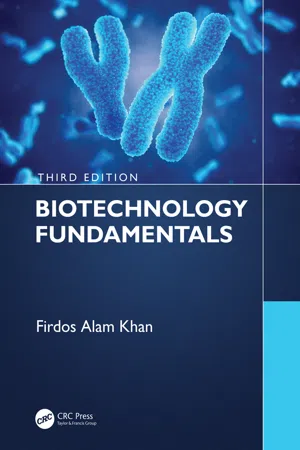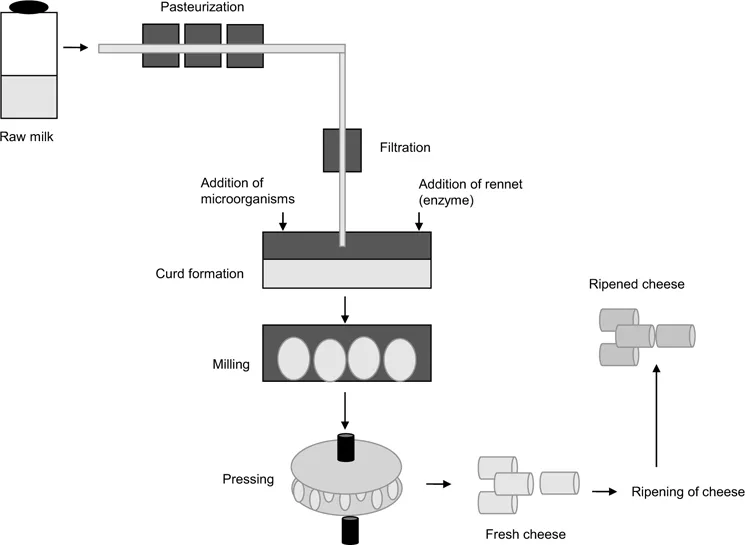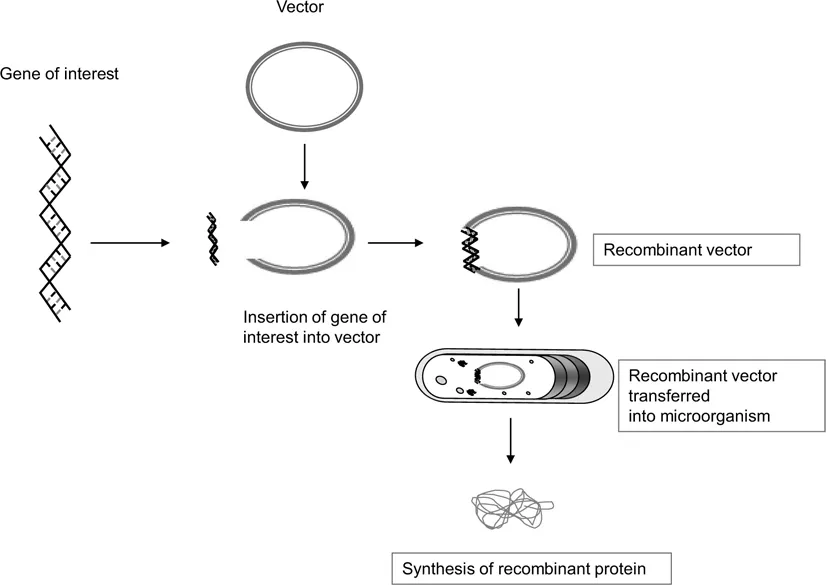
- 520 pages
- English
- ePUB (mobile friendly)
- Available on iOS & Android
Biotechnology Fundamentals Third Edition
About this book
After successful launching of first and second editions of Biotechnology Fundamentals, we thought let us find out the feedbacks from our esteemed readers, faculty members, and students about their experiences and after receiving their suggestions and recommendation we thought it would be great idea to write 3rd edition of the book. Being a teacher of biotechnology, I always wanted a book which covers all aspects of biotechnology, right from basics to applied and industrial levels. In our previous editions, we have included all topics of biotechnology which are important and fundamentals for students learning. One of the important highlights of the book that it has dedicated chapter for the career aspects of biotechnology and you may agree that many students eager to know what are career prospects they have in biotechnology. There are a great number of textbooks available that deal with molecular biotechnology, microbial biotechnology, industrial biotechnology, agricultural biotechnology, medical biotechnology, or animal biotechnology independently; however, there is not a single book available that deals with all aspects of biotechnology in one book. Today the field of biotechnology is moving with lightening speed. It becomes very important to keep track of all those new information which affect the biotechnology field directly or indirectly. In this book, I have tried to include all the topics which are directly or indirectly related to fields of biotechnology. The book discusses both conventional and modern aspects of biotechnology with suitable examples and gives the impression that the field of biotechnology is there for ages with different names; you may call them plant breeding, cheese making, in vitro fertilization, alcohol fermentation is all the fruits of biotechnology. The primary aim of this book is to help the students to learn biotechnology with classical and modern approaches and take them from basic information to complex topics. There is a total of 21 chapters in this textbook covering topics ranging from an introduction to biotechnology, genes to genomics, protein to proteomics, recombinant DNA technology, microbial biotechnology, agricultural biotechnology, animal biotechnology, environmental biotechnology, medical biotechnology, nanobiotechnology, product development in biotechnology, industrial biotechnology, forensic science, regenerative medicine, biosimialars, synthetic biology, biomedical engineering, computational biology, ethics in biotechnology, careers in biotechnology, and laboratory tutorials. All chapters begin with a brief summary followed by text with suitable examples. Each chapter illustrated by simple line diagrams, pictures, and tables. Each chapter concludes with a question session, assignment, and field trip information. I have included laboratory tutorials as a separate chapter to expose the students to various laboratory techniques and laboratory protocols. This practical information would be an added advantage to the students while they learn the theoretical aspects of biotechnology.
Frequently asked questions
- Essential is ideal for learners and professionals who enjoy exploring a wide range of subjects. Access the Essential Library with 800,000+ trusted titles and best-sellers across business, personal growth, and the humanities. Includes unlimited reading time and Standard Read Aloud voice.
- Complete: Perfect for advanced learners and researchers needing full, unrestricted access. Unlock 1.4M+ books across hundreds of subjects, including academic and specialized titles. The Complete Plan also includes advanced features like Premium Read Aloud and Research Assistant.
Please note we cannot support devices running on iOS 13 and Android 7 or earlier. Learn more about using the app.
Information
1 Introduction to Biotechnology
LEARNING OBJECTIVES
- Define biotechnology
- Discuss the historical perspectives of biotechnology
- Explain the classifications of biotechnology based on its applications
- Explain how biotechnology has revolutionized the healthcare, agricultural, and environmental sectors
- Explain how biotechnology became the science of integration of diverse fields
- Explain ethical issues in biotechnology
1.1 WHAT IS BIOTECHNOLOGY?
Cheese making at home:
- Place one cup of milk in a saucepan; bring the milk slowly to a boil while stirring constantly. It is very important to constantly stir the milk, or it will burn.
- Turn the burner off once the milk is boiling but leave the saucepan on the element or gas grate.
- Add vinegar to the boiling milk, at which point the milk should turn into curd and whey.
- Stir well with a spoon and let it sit on the element for 5–10 min.
- Pass the curd and whey through cheesecloth or a handkerchief to separate the curd from the whey.
- Press the cheese using the cloth to get as much of the moisture out as possible.
- Open the cloth and add a pinch of salt if desired.
- Mix the cheese and salt and then press again to remove any extra moisture.
- Put the cheese in a mold or just leave it in the form of a ball.
- Refrigerate for a while before eating.
1.1.1 Definitions of Biotechnology
- The use of living organisms (especially microorganisms) in industrial, agricultural, medical, and other technological applications.
- The application of the principles and practices of engineering and technology to the life sciences.
 FIGURE 1.1 Schematic representation of cheese making in industry, which involves many steps such as pasteurization, filtration, curd formation, milling, pressing, and ripening of the cheese.
FIGURE 1.1 Schematic representation of cheese making in industry, which involves many steps such as pasteurization, filtration, curd formation, milling, pressing, and ripening of the cheese. - The use of biological processes to make products.
- The production of genetically modified organisms or the manufacture of products from genetically modified organisms.
- The use of living organisms or their products to make or modify a substance. Biotechnology includes recombinant DNA (deoxyribonucleic acid) techniques (genetic engineering) and hybridoma technology.
- A set of biological techniques developed through basic research and applied to research and product development.
- The use of cellular and biomolecular processes to solve problems or make useful products.
- An industrial process that involves the use of biological systems to make monoclonal antibodies and genetically engineered recombinant proteins.
- Development of 3D organs or tissues under in vitro conditions

1.2 MICROBIAL BIOTECHNOLOGY
1.3 ANIMAL BIOTECHNOLOGY

Table of contents
- Cover
- Half Title
- Title
- Copyright
- Contents
- Preface
- Author
- Chapter 1 Introduction to Biotechnology
- Chapter 2 Genes and Genomics
- Chapter 3 Proteins and Proteomics
- Chapter 4 Recombinant DNA Technology
- Chapter 5 Microbial Biotechnology
- Chapter 6 Plant Biotechnology
- Chapter 7 Animal Biotechnology
- Chapter 8 Environmental Biotechnology
- Chapter 9 Medical Biotechnology
- Chapter 10 Nanobiotechnology
- Chapter 11 Product Development in Biotechnology
- Chapter 12 Trends in Biotechnology
- Chapter 13 Industrial Biotechnology
- Chapter 14 Ethics in Biotechnology
- Chapter 15 Careers in Biotechnology
- Index